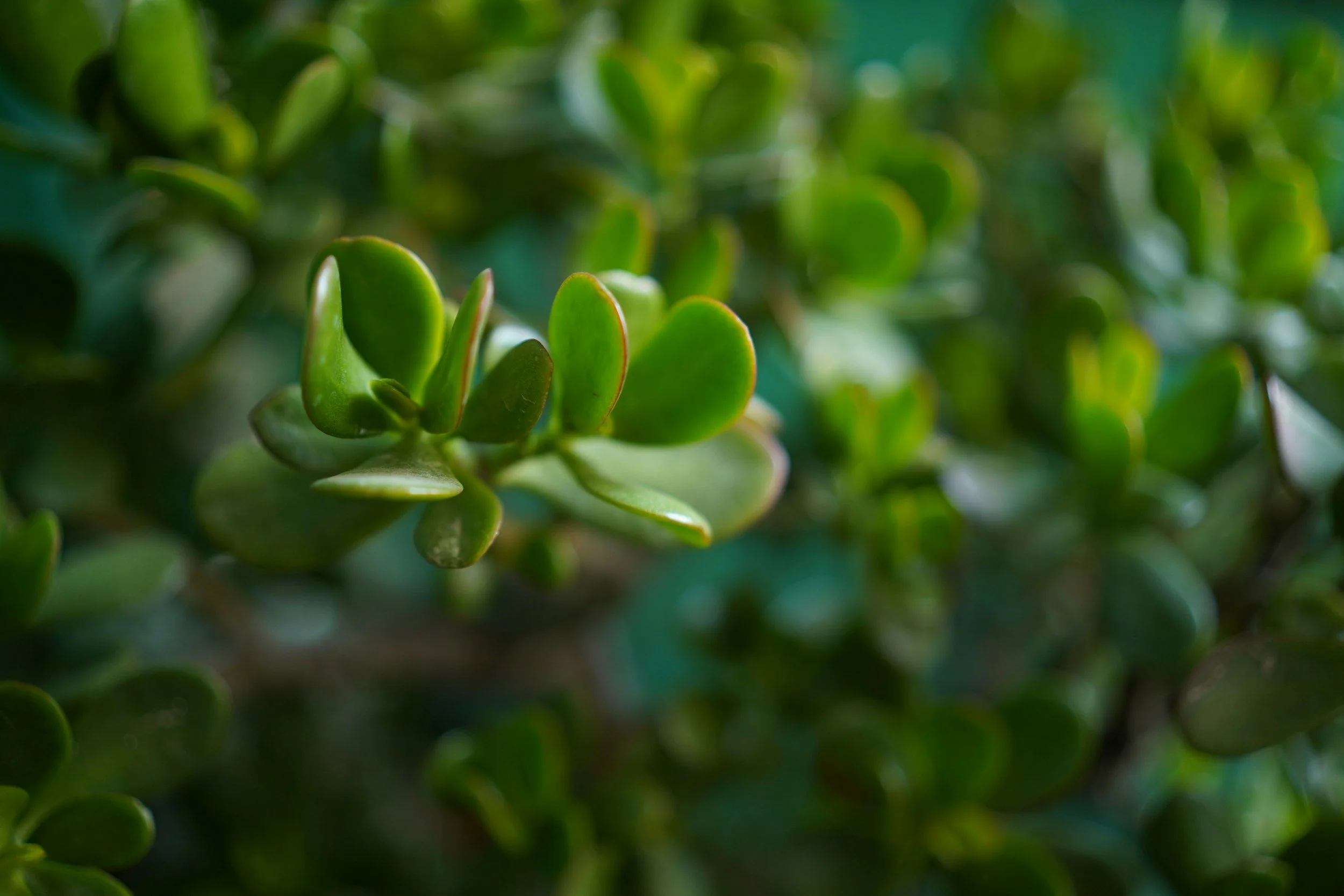Plant Profile: Jade Plant
Jade Plant Care for NC Gardeners: The Low-Maintenance Friend You Didn’t Know You Needed
If you’ve ever looked at your plant shelf and thought, “What I really need is a succulent that thrives on mild neglect and silently judges me for overwatering,” congratulations—you’re ready for a jade plant.
The jade plant (Crassula ovata) is the green-thumb equivalent of a cat: cute, independent, a little sassy, and not all that interested in your constant attention. For gardeners in North Carolina, where humidity plays games and sunlight can swing between “cozy and soft” to “microwave oven,” the jade plant is refreshingly chill—as long as you don’t drown it.
Let’s dig into what makes the jade plant a must-have in your indoor plant collection (and how not to commit unintentional botanical manslaughter in the process).
Meet the Jade Plant: A Succulent Superstar
Jade plants are native to South Africa and Mozambique, which should give you a clue right off the bat: they like it dry, sunny, and drama-free. With thick, fleshy leaves that store water and a charmingly tree-like shape, jade plants are easy to grow and even easier to love.
They’re considered symbols of luck and prosperity, which is adorable considering how many people accidentally kill them with kindness. But don’t worry. You’re not going to be one of them.
Light: Let the Sunshine In (But Not the Laser Beam Variety)
The jade plant loves light. Think bright, indirect sun or even full sun with a little protection during the hottest part of the day. If you’ve got a south- or west-facing window in your NC home, you’re in luck.
Ideal setup:
4–6 hours of bright light per day
Rotate the plant occasionally to avoid it growing lopsided like a houseplant version of the Leaning Tower of Pisa.
Bonus:
With enough sun, jade plants can develop a reddish tint along the edges of their leaves. It’s their version of a summer glow.
Watering: Less Is More, Overachievers Beware
If your love language is overwatering, the jade plant is not your match. This plant will rot out faster than milk on a sunny NC porch if you keep its roots too wet.
Water only when the soil is completely dry. Seriously. Stick your finger in the soil. No moisture? Cool, time to water. Still damp? Walk away. Take a breath. Maybe start another load of laundry.
How to water like a jade whisperer:
Water deeply until it drains from the bottom.
Empty the saucer. Always.
Reduce watering in winter when the plant slows down.
Soil: Drainage is Everything
This plant does not want to sit in moisture. It wants the fast-draining soil of its succulent ancestors.
Use:
Cactus or succulent mix
Or mix your own: 2 parts potting soil, 1 part perlite or coarse sand
Potting tip:
Always use a container with a drainage hole. Decorative pots without drainage? Cute, but also a death trap.
Temperature & Humidity: Cozy But Not Clammy
Jade plants like it between 65–75°F during the day, and no lower than 50°F at night. Luckily, most NC homes already hit that sweet spot.
They don’t need high humidity and may actually suffer in overly damp environments. So if you’re already struggling to keep your monstera’s aerial roots hydrated—congrats, the jade plant does not care.
Avoid:
Drafty windows
Heating vents
Sudden cold snaps (we’re looking at you, late March weather)
Fertilizing: Only When It’s Hungry
Jade plants don’t need much in the way of feeding. In fact, over-fertilizing can lead to weak, leggy growth.
Feed lightly during the growing season (spring and summer):
Use a balanced, water-soluble fertilizer at half strength
Once a month is plenty
Skip fertilizing in fall and winter
Your jade plant doesn’t do diet plans in the off-season. Let it rest.
Pruning: Shape Your Tiny Tree
Jade plants are easily pruned to encourage that miniature tree shape we all love. If your plant’s looking tall and awkward like a middle school yearbook photo, don’t be afraid to give it a little haircut.
Tips:
Prune in early spring before active growth kicks in.
Use clean scissors or shears.
Remove leggy stems and pinch back new growth to keep it bushy.
The cuttings? Stick them in dry soil and call it propagation. Boom—new plant.
Pests & Problems: Only a Few Frenemies
Jade plants are pretty pest-resistant, but they can occasionally get hit with:
Mealybugs (gross cottony stuff)
Spider mites (tiny, invisible jerks)
Root rot (a direct result of you loving them too much)
Combat pests with neem oil or insecticidal soap, and take a deep breath. It’s not the end of the world.
Propagation: Because One Is Never Enough
Propagating a jade plant is almost suspiciously easy. Cut a leaf or a stem, let it callous over for a few days, and then stick it into dry soil. Wait, water sparingly, and boom—a new jade baby.
Pro tip:
These make great gifts. Bonus points if you hand them out in tiny terra cotta pots and say something dramatic like “Here, I grew you a fortune.”
Final Thoughts from Your Fellow NC Gardener
Jade plants are the ultimate set-it-and-forget-it houseplant. They're tidy. They're forgiving. They won’t punish you if you forget to water them for two weeks. In fact, they might like you more for it.
Whether you’re a seasoned NC gardener or you just wanted one plant that wouldn’t ruin your whole vibe, the jade plant is here for you—with thick glossy leaves and zero judgment.
And hey—if you’ve killed a few before (we all have), maybe it’s time to try again. One day, you’ll wake up to a jade plant that’s been with you for years. It won’t ask for much. Just sunlight, the occasional drink, and for you to stop calling it “unkillable” like it’s some kind of test.



